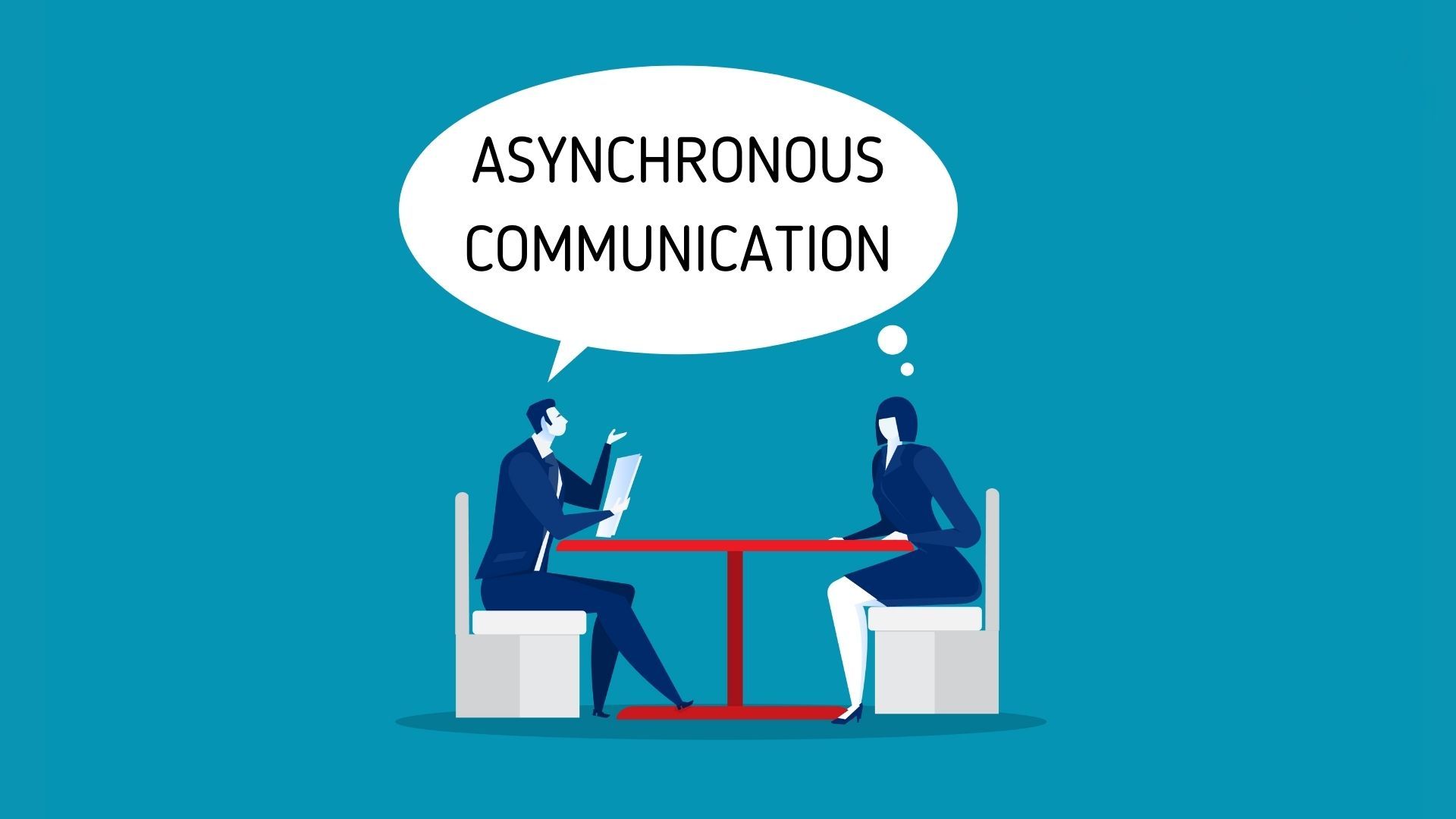Asynchronous communication is a process of communication in which the exchange of information is independent of time and participating members in the communication are not required to be present at the same moment in time.
When you send a message via asynchronous communication, you do not expect any immediate response such as emails.
While on the other hand, when you send a message via synchronous communication, you will get an immediate response from the recipient for example in-person meetings.
What is Asynchronous Communication?
Asynchronous communication is a form of communication that doesn’t require immediate attention and response from the recipients, and they can respond to a message at their convenience. In such communication, communicators need not be present in the exact location at the same time. The use of Facebook Messenger and WhatsApp is an example of asynchronous example.
Synchronous vs Asynchronous Communication
Synchronous and asynchronous communication happens in our regular lives quite frequently, and they are often quite confusing. Let us understand the difference between the processes when you communicate synchronously and when you communicate asynchronously-
The main difference between synchronous and asynchronous communication is that synchronous communication happens at the moment and it is more dynamic and faster. Conversely, when you use asynchronous communication, you will not get the response of the recipients right away.
Synchronous communications like meetings or video conferencing occur in real-time, while on the other hand, asynchronous communications happen over a period of time. Emails, project management tools for remote workers, direct messaging with a remote team, video recordings, etc are examples of asynchronous communication.
Asynchronous communication is considered good for working with different time zones, as is quite effective in creating a permanent record of ideas, discussions, and decisions.
Benefits of Asynchronous Communication

Asynchronous communication have their benefits and here are some of them:
1. Flexibility while responding
There is better flexibility for responses in asynchronous communication, where communicators don’t need to stand face-to-face. A real-life example of this is a delayed reply. That is, replying to an official mail after the hectic day is over. Here you are the one to manage your conversation and time. When someone has the key to conversation management, the work done proves to be more productive.
2. Communication is automatically conserved
Asynchronous communication is mostly conserved. Since most of it comes under online mode as an email, it stays saved by default unless it is deleted manually.
Now, such conserved conversations may not be necessary at all times. However, if it does, asynchronous communication is excellent.
3. More honesty
More than real life, people tend to be honest in reel life. Even on Twitter, users who are supposedly worse liars tend to be honest. There are no general reasons why such a thing happens, but they are less dishonest when people know it’s stored.
4. No problem with the Time zone
Different time zones can cause problems when it comes to communication. With asynchronous communication whatsoever, you don’t have to be concerned about time zones anymore.
Miscommunication in Asynchronous Communication
While the three benefits sound enough to help you out with problems, asynchronous communication has its ways of creating contemporary issues. There is a lot of miscommunication that comes with asynchronous communication.
To this, you can adopt some ways that will reduce misconceptions, such as waiting to respond and knowing what to respond. Being transparent with the message sent and, if in doubt, clearing it out.
You can also use emoticons or gifs that work as virtual expressions. Also, always positively assume things.
Problems faced in Asynchronous Communication

In this communication, where clues coming from tones and facial expressions are not found, the reverted responses may not be the most suitable. This may lead to an absolute misunderstanding. With such misleads, it gets very difficult for a team to stand up and put their best. This is supposedly the biggest disadvantage of asynchronous communication. Here are some other disadvantages that take the communication down:
1. Lack of motivation
When there’s no live interaction, it is not much enjoyable. The environment created is more about losing motivation.
2. Feedback is missed
In acronymous communication, instant feedback is omitted. Even if it’s not instant, quicker feedback sessions are better than getting it late. In most online sessions, the remaining seconds left are utilized in getting answers to certain questions.
3. No personal interaction
No personal interaction amidst the attendees makes it less interesting. Naturally, no human connections in person distract the learners. Isolated workers share their experience as working in isolation only works for a short period. After a while, the routine may still be effective, but in most cases, people lose concentration. It is noted that motivation comes from working in a group.
4. No in-person collaboration
Working in a team, but separately and away from each other, makes waiting time longer. That is, you have to wait until the other person has completed his words. You don’t even know when they are stopping- while on the opposite side, you are slowly losing interest and patience.
When there are no real-time discussions and live collaboration, people tend to be less interested. And hence, losing your motivation to participate more actively.
Problems faced in Synchronous Communication
There are already many benefits you get from using asynchronous communication. But here are some more points about problems faced in synchronous communication that will even convince you more towards asynchronous communication:
1. Frequent interruptions
There happen to be a lot of interruptions in face-to-face conversations that outcast the attention of people engaged. Those works that require focused hours such as writing and designing get unwanted interruption during work hours.
2. Shallow work and deep work
In Deep work, workers are more connected and less productive. The surrounding in such a case is more about connections. Only a moment of a second can overturn the whole discussion makes workers believe that going online is better than not missing out on anything.
3. Increased stress
Because one is expected to be more dedicated and available, workers tend to have lesser liberty on their schedule. Synchronous culture leads to faster work that gives them more stress and frustration.
4. Low discussion quality
Since the culture is more bothered about fast responses, responders don’t get to speak out the best. The immediate answers are always not the best, and to offer the best ones, always takes time.
Tips for building an asynchronous culture in the team
The good thing is you don’t need much time to change to asynchronous from synchronous. But remember that you have to adapt to new tools, habits, and a different routine.
If you are doing it alone, individually, over-communication is where you should start. It means that when you send a message, you should add as much important information as possible. When you add images such as related screenshots, it will be a bonus for your start. Also, be in no doubt about your needs and specify the deadline. The more precise details are given, the better it is for clarity.
Keep your access to information sharing. Private documents or anything that has to be requested will queue up a lot of time that would have been otherwise saved.
Prerequisite knowledge always helps. So what you can do is create a new document or thread some days before the meeting’s actual day. Doing so will ensure that all the participants already have an insight into the topic and feel connected. This will also help out the meeting absentees about what was going on in the meeting.
Let off your notifications. Yes, you should indeed turn off your notifications and instead set a reminder to go through all direct mails and messages.
Summing Up!
For any leader, they must know what asynchronous and synchronous communication is along with their pros and cons. Each comes with its own plus points and bad points.
So when used, they should be according to the situation.
Which form of communication do you find more useful for you- synchronous or asynchronous?
Pinky is an MBA in Marketing from the University of Mumbai. She loves helping people out in learning Marketing and sharing latest ideas and tactics for growing businesses.
